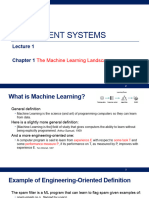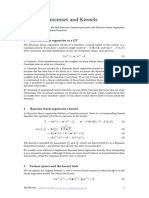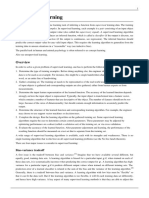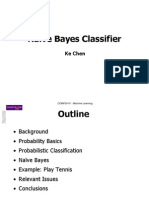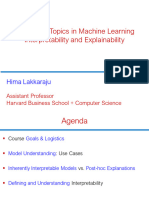0% found this document useful (0 votes)
81 views24 pagesIntroduction To Machine Learning
This document provides an introduction and overview of machine learning. It discusses the machine learning framework, including the training and testing phases. It also introduces supervised learning, which involves learning from labeled examples, and unsupervised learning, which involves discovering hidden patterns from unlabeled data. Key concepts covered include the machine learning pipeline, data preparation, model training, evaluation, and different categories of machine learning techniques like supervised and unsupervised learning.
Uploaded by
harith danishCopyright
© © All Rights Reserved
We take content rights seriously. If you suspect this is your content, claim it here.
Available Formats
Download as PDF, TXT or read online on Scribd
0% found this document useful (0 votes)
81 views24 pagesIntroduction To Machine Learning
This document provides an introduction and overview of machine learning. It discusses the machine learning framework, including the training and testing phases. It also introduces supervised learning, which involves learning from labeled examples, and unsupervised learning, which involves discovering hidden patterns from unlabeled data. Key concepts covered include the machine learning pipeline, data preparation, model training, evaluation, and different categories of machine learning techniques like supervised and unsupervised learning.
Uploaded by
harith danishCopyright
© © All Rights Reserved
We take content rights seriously. If you suspect this is your content, claim it here.
Available Formats
Download as PDF, TXT or read online on Scribd
/ 24























































